Abstract
Biochemical and clinical changes have been monitored in 30 patients with rheumatoid arthritis treated with either hydroxychloroquine or sodium aurothiomalate over a period of 6 months. Acute-phase reactants improved in both treatment groups, while serum sulphydryl and serum histidine improved only in the gold-treated patients. Correlation matrices were constructed from mean clinical and biochemical data at successive clinic visits. Correlations obtained with gold were more frequent and of a higher level of significance than those obtained with hydroxychloroquine at the doses we studied. This lends support to the use of correlation matrices as a screening test for potential long-term antirheumatoid activity of drugs in man.
Full text
PDF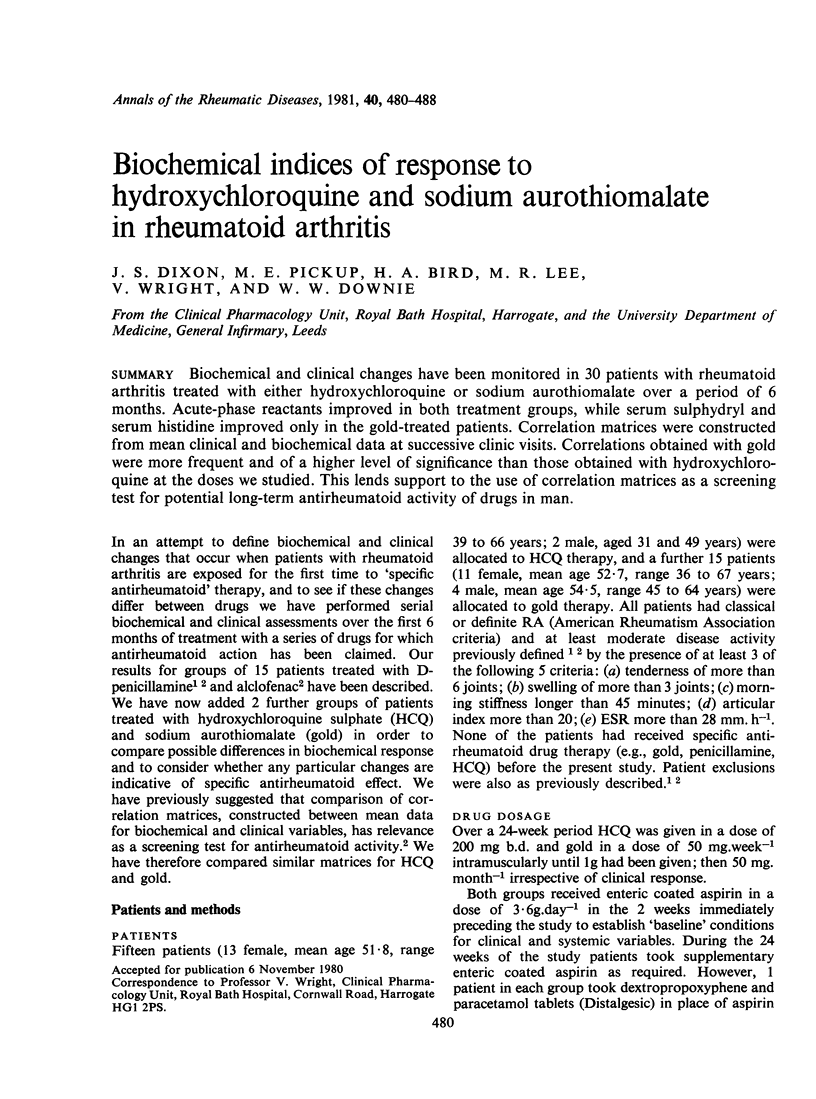
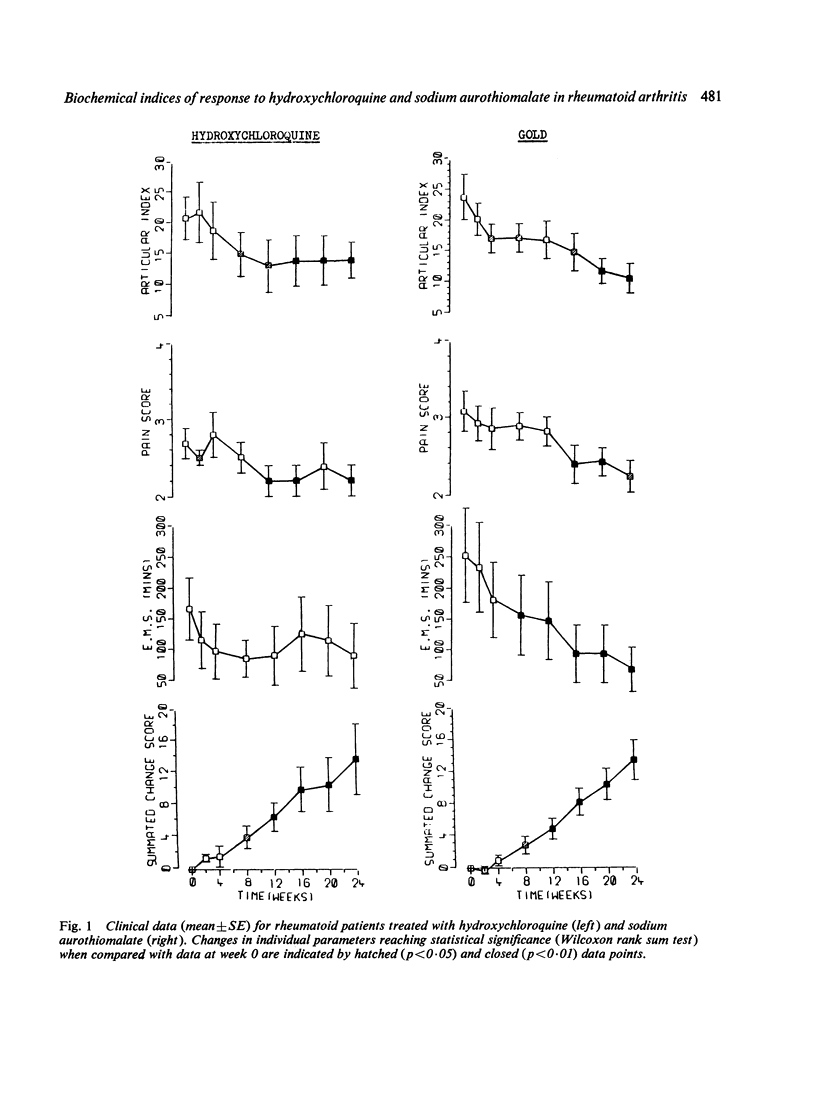
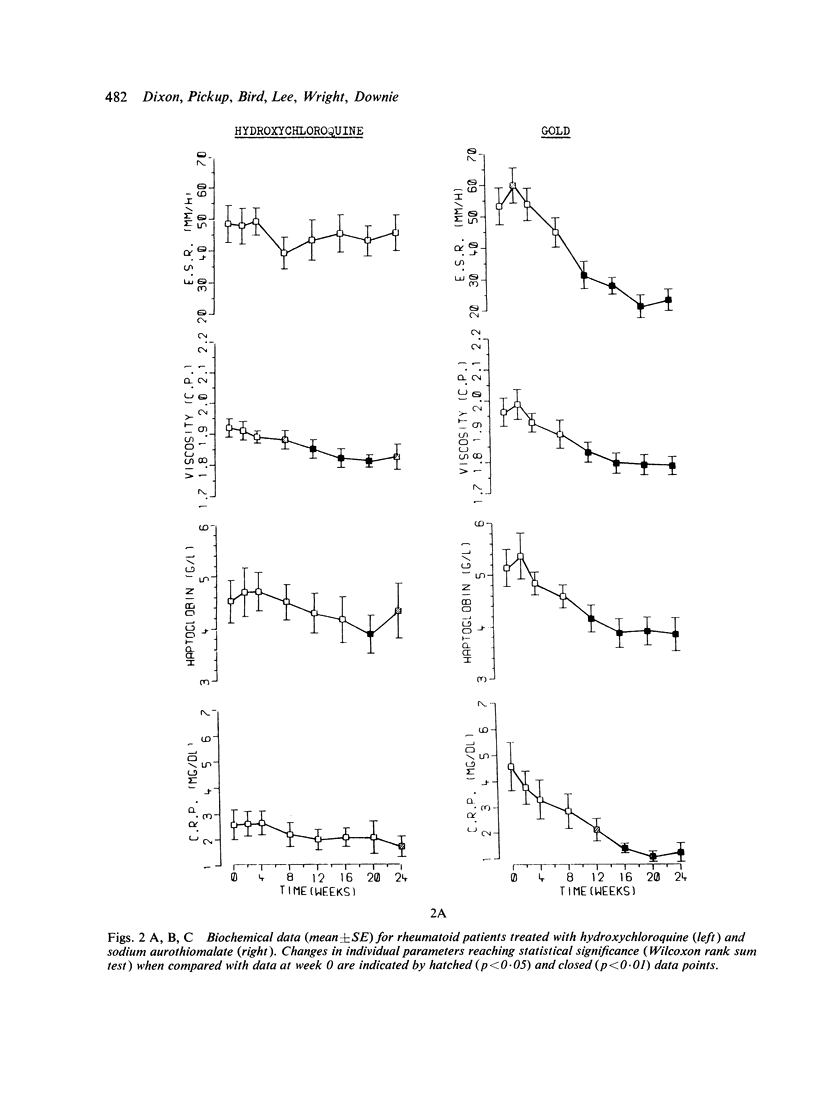
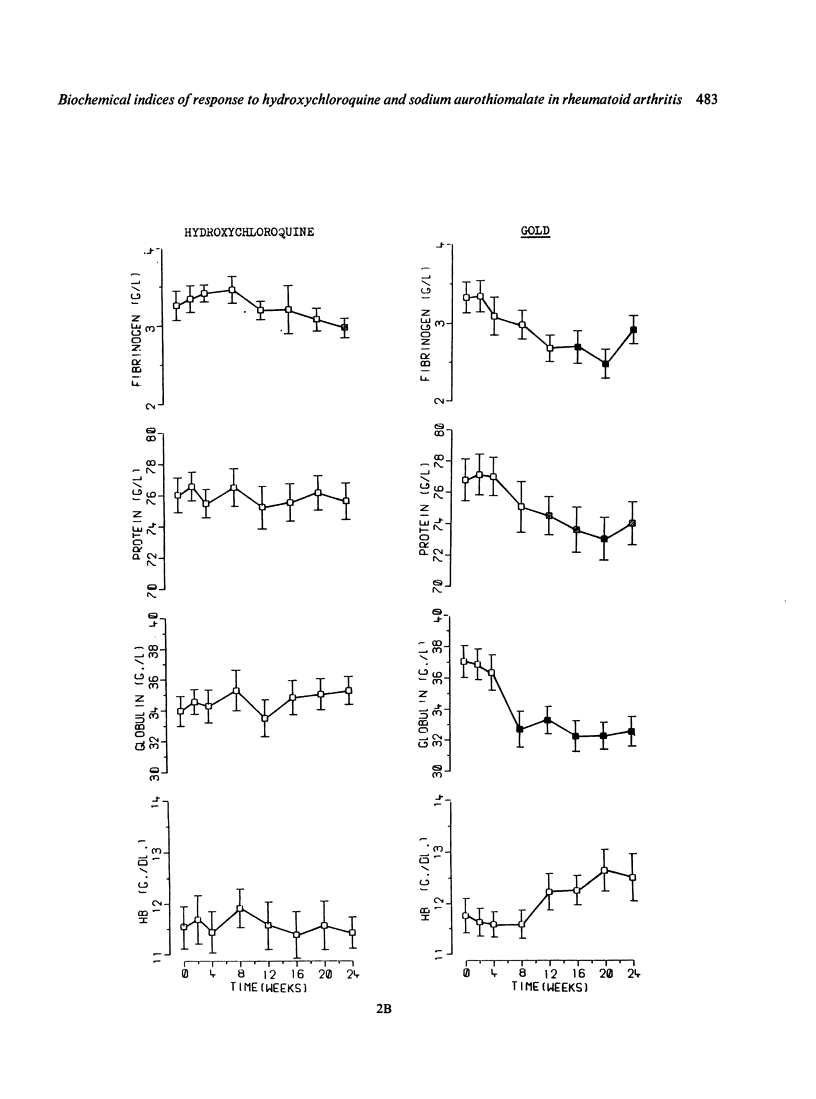
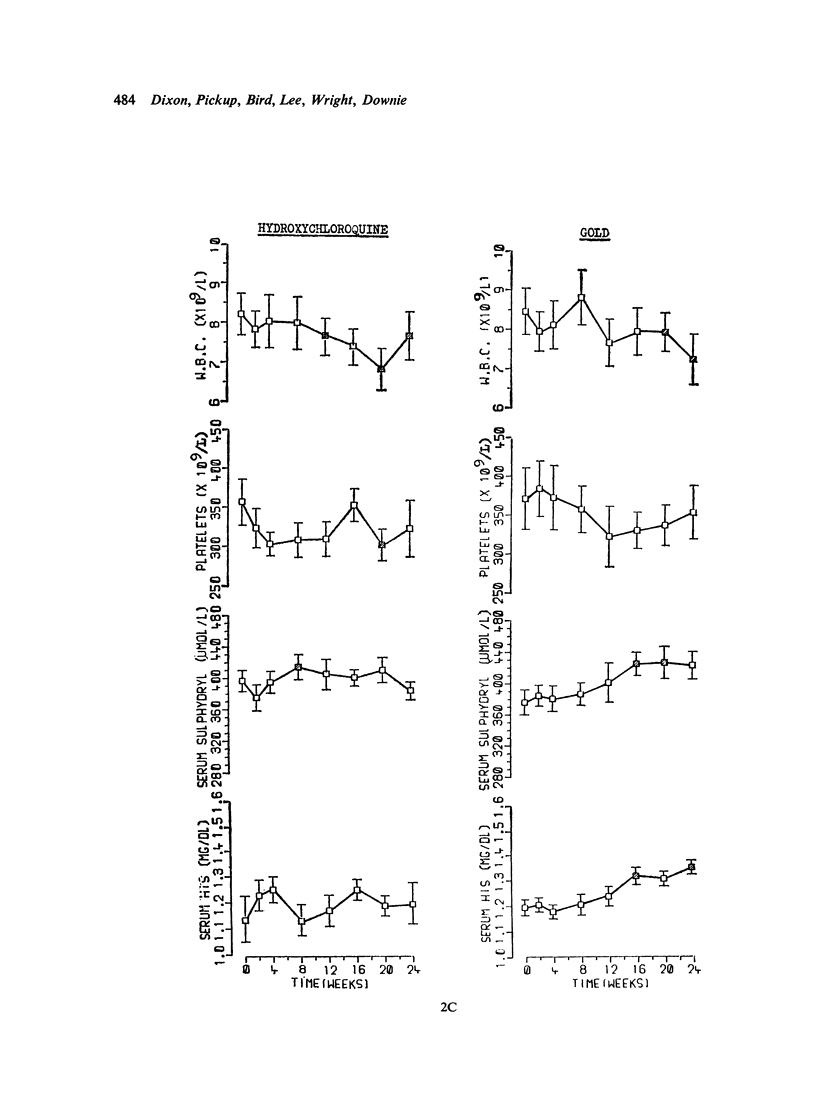
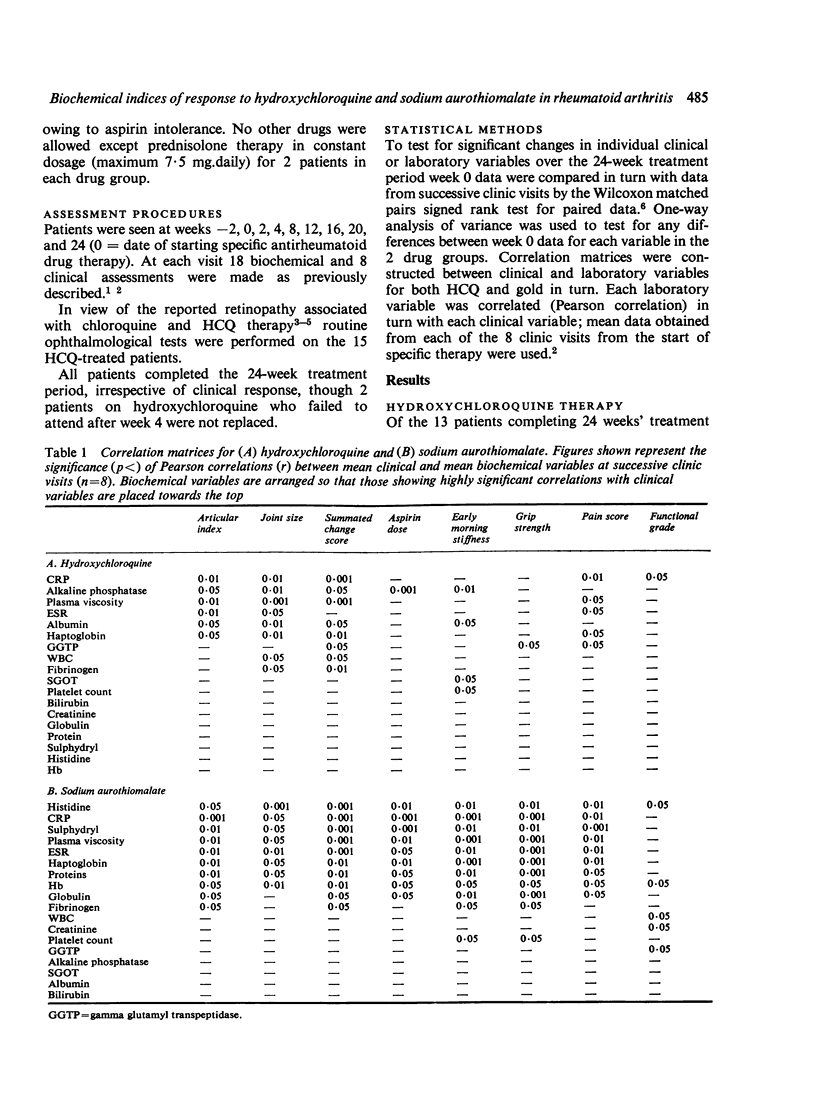
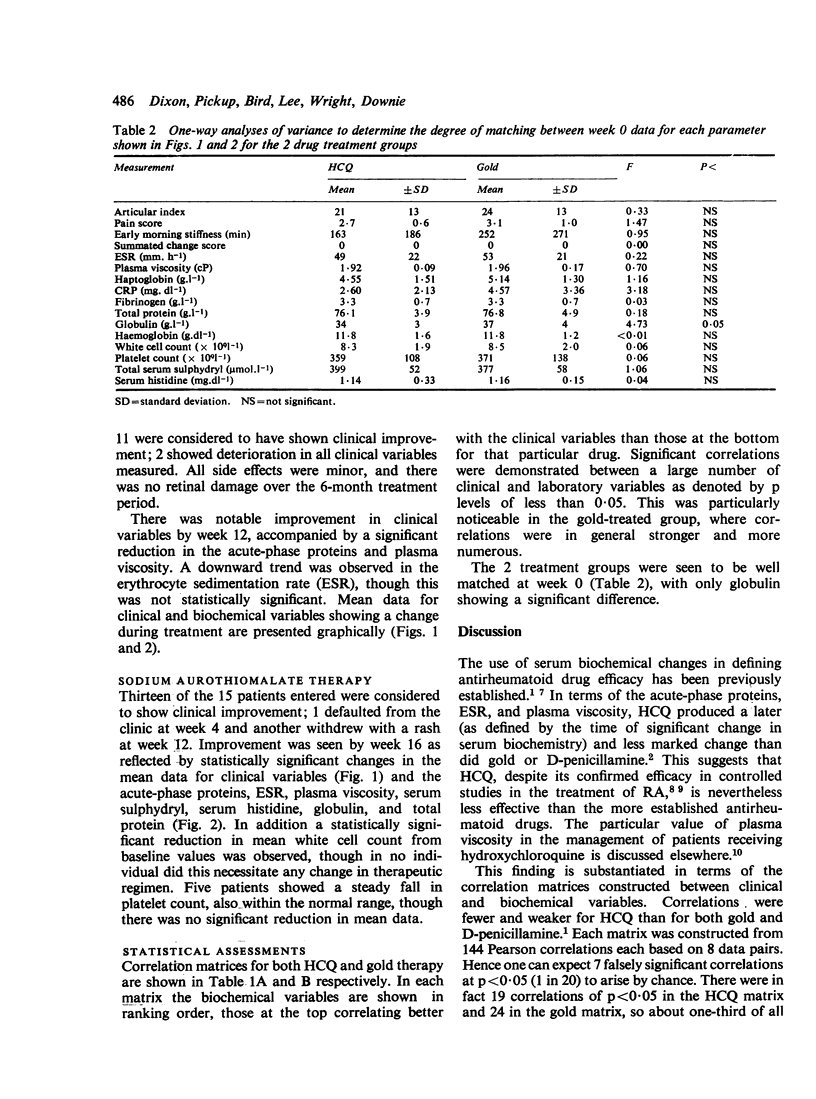
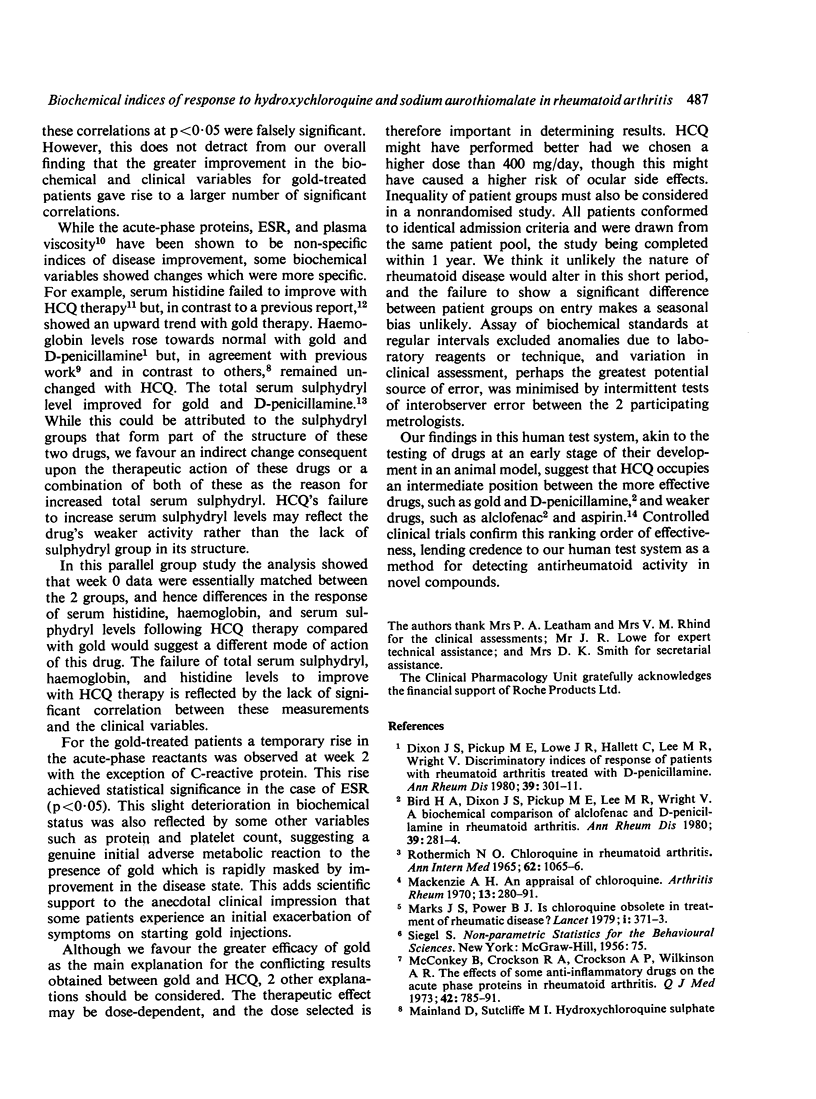
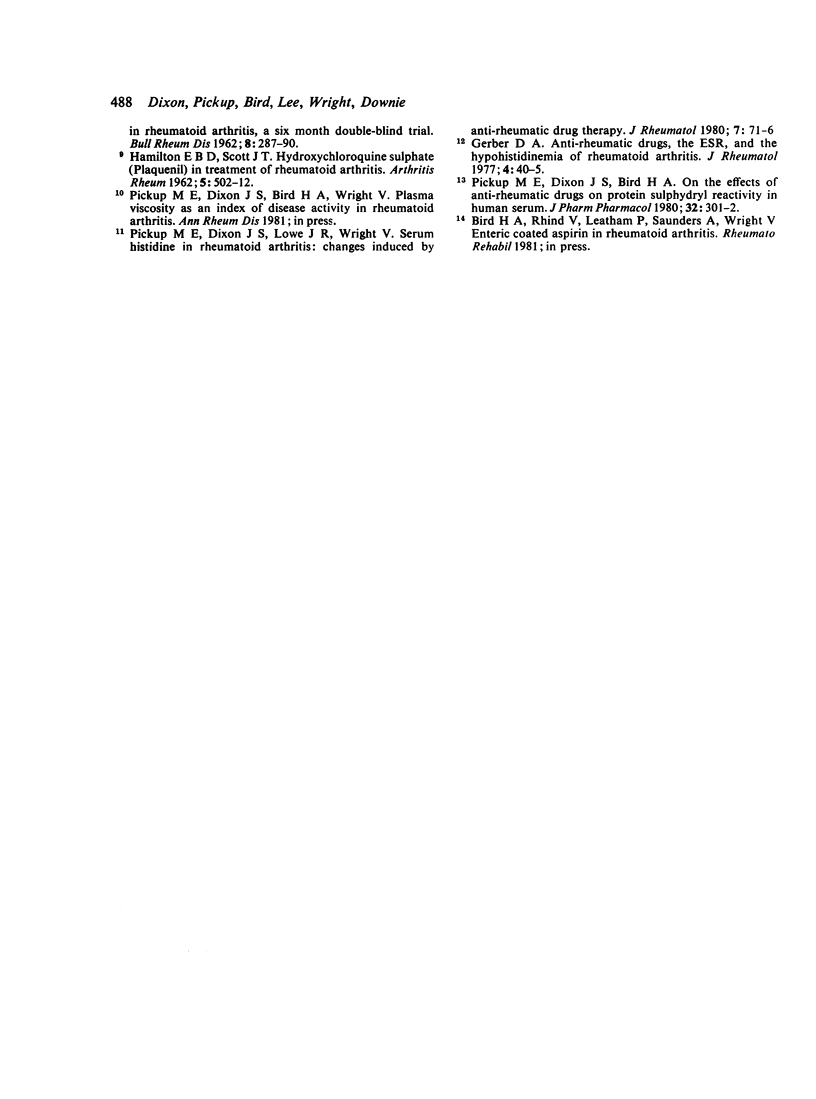
Selected References
These references are in PubMed. This may not be the complete list of references from this article.
- Bird H. A., Dixon J. S., Pickup M. E., Lee M. R., Wright V. A biochemical comparison of alclofenac and D-penicillamine in rheumatoid arthritis. Ann Rheum Dis. 1980 Jun;39(3):281–284. doi: 10.1136/ard.39.3.281. [DOI] [PMC free article] [PubMed] [Google Scholar]
- Dixon J. S., Pickup M. E., Lowe J. R., Hallett C., Lee M. R., Wright V. Discriminatory indices of response of patients with rheumatoid arthritis treated with D-penicillamine. Ann Rheum Dis. 1980 Aug;39(4):301–311. doi: 10.1136/ard.39.4.301. [DOI] [PMC free article] [PubMed] [Google Scholar]
- Gerber D. A. Antirheumatic drugs, the ESR, and the hypohistidinemia of rheumatoid arthritis. J Rheumatol. 1977 Spring;4(1):40–45. [PubMed] [Google Scholar]
- HAMILTON E. B., SCOTT J. T. Hydroxychloroquine sulfate ("plaguenil") in treatment of rheumatoid arthritis. Arthritis Rheum. 1962 Oct;5:502–512. doi: 10.1002/art.1780050507. [DOI] [PubMed] [Google Scholar]
- Mackenzie A. H. An appraisal of chloroquine. Arthritis Rheum. 1970 May-Jun;13(3):280–291. doi: 10.1002/art.1780130310. [DOI] [PubMed] [Google Scholar]
- Marks J. S., Power B. J. Is chloroquine obsolete in treatment of rheumatic disease? Lancet. 1979 Feb 17;1(8112):371–373. doi: 10.1016/s0140-6736(79)92905-2. [DOI] [PubMed] [Google Scholar]
- McConkey B., Crockson R. A., Crockson A. P., Wilkinson A. R. The effects of some anti-inflammatory drugs on the acute-phase proteins in rheumatoid arthritis. Q J Med. 1973 Oct;42(168):785–791. [PubMed] [Google Scholar]
- Pickup M. E., Dixon J. S., Bird H. A. On the effects of antirheumatic drugs on protein sulphydryl reactivity in human serum. J Pharm Pharmacol. 1980 Apr;32(4):301–302. doi: 10.1111/j.2042-7158.1980.tb12920.x. [DOI] [PubMed] [Google Scholar]


